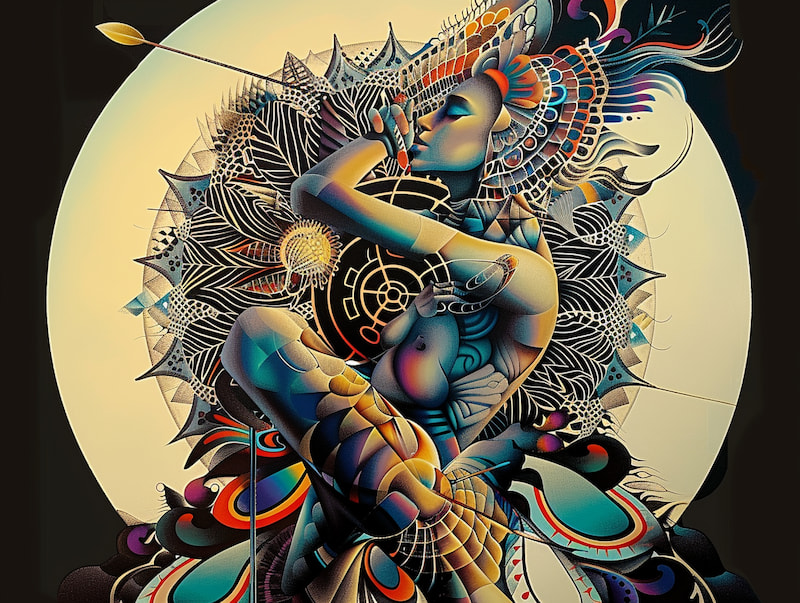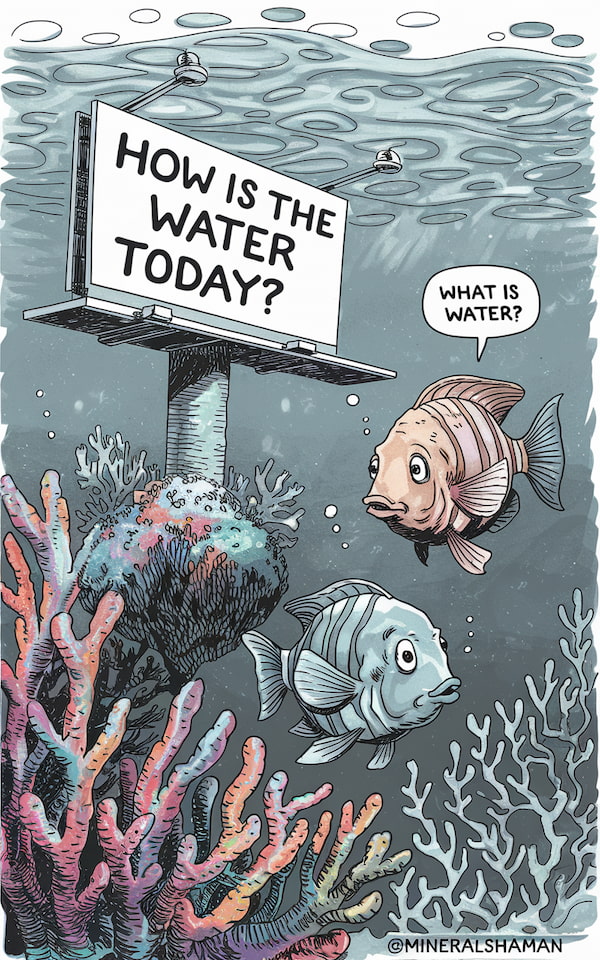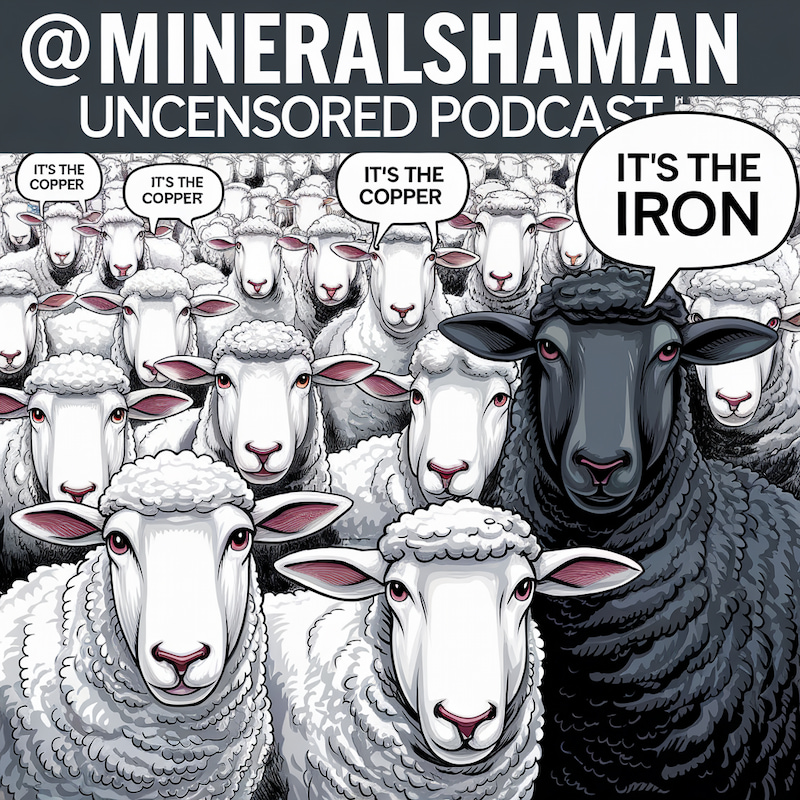Ayahuasca, an ancient medicine with deep roots in Amazonian shamanic traditions, has garnered significant attention in the past 20-30 years for its potential therapeutic effects. With a history of use dating back thousands of years in the complex plant medicine and spiritual traditions of various Amazonian tribes, there is much traditional knowledge to draw from. However, Ayahuasca presents a challenge for the Western medical paradigm, which views symptoms as signs of illness. The medicine’s tendency to exacerbate symptoms in the short term confounds traditional medicine. To fully understand the complexity of Ayahuasca and its therapeutic uses, one must abandon the Western medical paradigm and view this medicine (and many others of the Amazon) through a different lens.
In Western societies, there is an established paradigm with decades of application and research that more accurately explains Ayahuasca’s modes of action: German New Medicine (GNM). No other Western paradigm explains Ayahuasca’s therapeutic potential better than GNM. It should be noted that GNM is not part of the ancestral traditions of the Amazon, yet much about the shamanic paradigms aligns perfectly with GNM and has thus far perplexed those who wish to understand Ayahuasca through the allopathic model. The struggle to understand Ayahuasca through the allopathic lens has led to many logical fallacies and assumptions that do not hold up under practice with this medicine. This has resulted in a polarized view, where one side sees Ayahuasca as a magical medicine that defies explanation, while the other side fails to acknowledge its profound healing effects because it doesn’t fit within the known paradigm. Cases of miraculous healings are often seen as anomalies, or other causes are attributed.
Ayahuasca’s Origins and Composition
Ayahuasca is a traditional Amazonian brew made from the Ayahuasca vine (Banisteriopsis caapi) and one or more admixture plants, usually containing high amounts of N,N-dimethyltryptamine (DMT). The admixture plants vary depending on the region: Chaliponga or Huambisa in the northern Amazon, Psychotria viridis (Chakruna) in the southern Amazon, and sometimes Mimosa hostilis (Jurema) root bark. Outside of the Amazon, Ayahuasca brews may utilize other DMT-containing plants, such as Acacia confusa. However, DMT is not necessary for the Ayahuasca brew to be medicinal, as some traditions work with the Ayahuasca vine alone.
The effects of DMT are not entirely relevant to this discussion. In some ways, the visionary properties of DMT have become a distraction. Due to the monoamine oxidase inhibition by the Ayahuasca vine, endogenous DMT produced by the body builds up even without added DMT. For many people, the experience of drinking the Ayahuasca vine alone or with added DMT sources is quite similar, with the notable difference being that DMT induces brighter visions and seems to penetrate through any resistance offered by the ego. However, once DMT has opened a person up, the effects of the medicine are primarily a result of the Ayahuasca vine itself.
Little is known about the hundreds of alkaloids, fats, sugars, and minerals contained in the Ayahuasca vine. Only a few alkaloids have been isolated, including β-carboline alkaloids such as harmine, harmaline, and tetrahydroharmine, which act as monoamine oxidase inhibitors (MAOIs). However, there is a much more potent effect of Ayahuasca that is often overlooked by researchers: its ability to induce a strong parasympathetic response.
The Parasympathetic Effects of Ayahuasca
The parasympathetic effects of Ayahuasca are more apparent to those familiar with meditation and sleep practices. When Ayahuasca takes effect, the body slows its breathing, and a feeling of heaviness arrives. For practitioners of Yoga Nidra, hypnosis, or deep meditation practices like sound meditation, this feeling is familiar. The body becomes heavy, and the need to lie down is very intense. Some traditions view this feeling as negative and encourage sitting up to avoid succumbing to the overwhelming heaviness. Nevertheless, what is happening is the activation of the parasympathetic nervous system and intense vagotonia.
For people who may already be in a healing process, any symptoms they have been experiencing usually intensify under the effects of Ayahuasca. It is not uncommon for people to run a fever almost immediately. The activation of the parasympathetic nervous system coincides with the shutting down of sympathetic responses, so people might feel their sinuses swell or feel as though lymphatic drainage has stopped.
In other instances, people who enter the Ayahuasca experience in a strong state of sympathetic dominance may feel little to nothing because the medicine is unable to shift their nervous system. It is not uncommon for sympathetic dominant participants to have muted experiences. However, in such cases, the Ayahuasca ceremony itself often helps them resolve the conflicts that give rise to their sympathetic dominance, and they might enter into a healing phase soon after the ceremony ends.
Amazonian traditions acknowledge that Ayahuasca is an intensely parasympathetic medicine, often referring to it as feminine, a mother energy, or intensely “Yin.” While these terms are often used in a spiritual sense, they capture the parasympathetic nature of Ayahuasca. In the conception of masculine vs. feminine, parasympathetic is feminine, and sympathetic is masculine—not in the sense of gender but more in the Taoist sense of their universal qualities. Ayahuasca is a medicine of receiving and non-doing, of allowing vs. controlling, and of deep surrender, all traits associated with the feminine.
The Parasympathetic Nervous System and Healing
The parasympathetic nervous system, often referred to as the “rest and digest” system, is responsible for promoting relaxation, conserving energy, and supporting bodily functions such as digestion, healing, and repair. When activated, it counterbalances the effects of the sympathetic nervous system. In a healthy state, we ideally move between sympathetic and parasympathetic states evenly. During the day, we are primarily in a sympathetic state, while at night and during sleep, we should be in a parasympathetic state. This cycle allows the body to function during the day and repair at night.
It is important to understand that during sympathetic cycles, the body engages in minimal healing. In states of fight or flight, symptoms of illness are rarely experienced because the body is not concerned with healing while in such a state. For example, when people experience a stuffed-up nose, the medicines given by the Western allopathic system are all stimulants of the sympathetic nervous system. Decongestants put the inflamed tissues into a sympathetic state, relieving the inflammation. When the medicine wears off, the body returns these tissues to a parasympathetic state to attempt repair, and congestion returns.
Most, if not all, medicines used in allopathic care work this way, although allopathic physicians are not taught to view it from this perspective. Other examples of medicines that induce a sympathetic state to relieve symptoms include steroids, vitamin C, chemotherapy drugs, and stimulants. These drugs are considered useful because they alleviate symptoms; however, they do not allow the body to complete the healing processes it is attempting.
German New Medicine and the Healing Phase
German New Medicine (GNM), developed by Dr. Ryke Geerd Hamer, proposes that diseases are caused by unexpected biological conflict shocks that manifest on the psyche, brain, and organ levels. According to GNM, when a conflict shock occurs, the body enters a sympathetic state, and tissue adaptations begin. Rarely are there symptoms in the sympathetic state because the body is most concerned with adapting and surviving. When referring to people living in a sympathetic dominant state, I’m referring to those in a state of active conflict. Many people do not realize that in states of active conflict, they often feel very good because the body is not concerned with repair, and no symptoms occur. Instead, energy is strong. Subtle signs of being in a sympathetic state might include cold hands and feet, racing thoughts, disturbed sleep, or generally feeling cold.
Much of what happens in the sympathetic state is intended to get the person to resolve the conflict. Once the conflict is resolved, the body shifts into a state of parasympathetic dominance, known as the “healing phase,” characterized by rest, relaxation, and the activation of repair mechanisms. The healing phase is when symptoms appear. All of the adaptations made during the conflict active phase now need to be undone, so the body becomes warm (often with fever), and the removal of tissue begins, assisted by fungi and bacteria as the clean-up crew. In Western medicine, the appearance of symptoms signals that a person is “sick.” However, in GNM, the appearance of symptoms signals that the conflict has been resolved and the person is now healing.
During the healing phase, symptoms usually appear as the body works to restore balance and heal any damage caused by the preceding conflict. The intensity and duration of these symptoms are proportional to the severity and length of the conflict.
Ayahuasca, Parasympathetic Activation, and Healing
Viewed through the lens of German New Medicine, Ayahuasca’s activation of the parasympathetic nervous system supports the body’s natural healing processes. By promoting a state of deep relaxation and introspection, Ayahuasca helps individuals resolve underlying emotional and psychological conflicts, facilitating the transition into the healing phase. It is not uncommon for people to experience the induction of various healing phase symptoms immediately after consuming Ayahuasca, such as vomiting, diarrhea, fever, coughing, nasal discharge, body tremors, muscle spasms, and others. All of these effects correlate with the resolution of various types of conflicts under the GNM lens.
It is also very common for people to feel better after the medicine has worn off. In the early days of working with Ayahuasca, before understanding the GNM paradigm, these effects were still perceived as beneficial but were described in terms of Ayahuasca “pushing out a cold” or being “anti-viral” or “anti-parasitic.” However, these explanations are examples of attempting to stretch unsupported paradigms to fit the Ayahuasca experience. When viewed through the lens of GNM, all of the effects are simply the innate healing symptoms being activated within the body.
In situations where a person enters the Ayahuasca experience in active conflict, the medicine’s ability to invoke profound insights, emotional catharsis, and spiritual experiences supports the resolution of conflicts and the promotion of healing. The shift towards parasympathetic dominance is often accompanied by feelings of inner peace, clarity, and a greater sense of connection with oneself and others.
Final Thoughts
There is much more to Ayahuasca than the physical healing it ushers in. Approaching this medicine with an understanding of GNM explains why Ayahuasca is able to “heal” so many different physical ailments. It does this simply by activating the body’s own innate healing system—nothing more. In this way, Ayahuasca forces people into a state where their bodies can finally engage in necessary repairs. This is not a magical process but one firmly grounded in the biological laws of nature. The integration of Ayahuasca into the Western allopathic model creates confusion and has led to research paths that are unnecessary and untenable. Future research would be better focused on understanding the biological laws espoused by GNM and how Ayahuasca brings the body into the healing phase.
Naturally, there are caveats to this discussion. Ayahuasca is not a panacea and not for everyone. This medicine is not one that can be worked with on one’s own. There are also cultural considerations for Westerners turning to an ancestral medicine of the Amazon. Working with Ayahuasca with an experienced practitioner and with respect for the culture and ecosystem from which this medicine comes is essential.






